Stadium lights are essential for enhancing visibility on football fields, ensuring optimal conditions for athletes regardless of the time of day. When natural daylight is insufficient, these lights provide the necessary illumination to maintain peak performance. Given that football stadiums vary in size and design, the lighting solutions are tailored to meet the specific needs of each venue.
The intensity of the lighting also correlates with the level of professional play. Higher-level games require more sophisticated lighting to ensure clarity and brightness on the field. Additionally, these lights are designed to offer ambient illumination for spectator areas, enhancing the overall experience for both players and fans.
Table of Contents
ToggleWhat Kind of Lights Do Outdoor Football Stadiums Use?
Understanding the types of lighting used in football stadiums helps ensure optimal visibility for both players and spectators. This section will explore the various lighting solutions for outdoor stadiums, followed by a brief look at indoor stadium lighting.
Flood Lights
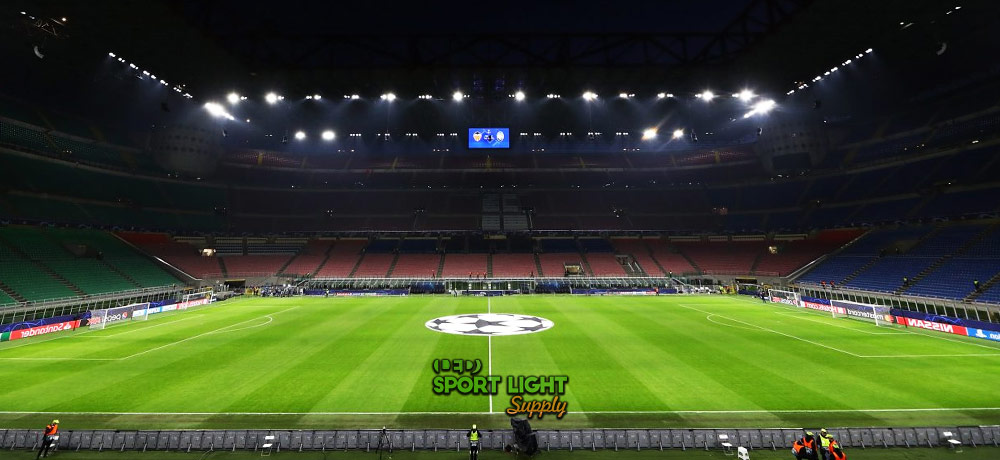
Flood lights are essential for providing broad, uniform illumination across the football field. Designed with wide beam angles, these lights are used to minimize shadows and ensure clear visibility for players, spectators, and television cameras. Often referred to as “fill lights,” flood lights are strategically positioned along the sidelines and high above the field to reduce glare and avoid creating blind spots.
These lights enhance the overall visibility of the field, allowing players to see more details during gameplay and improving the viewing experience for audiences.
Spot Lights
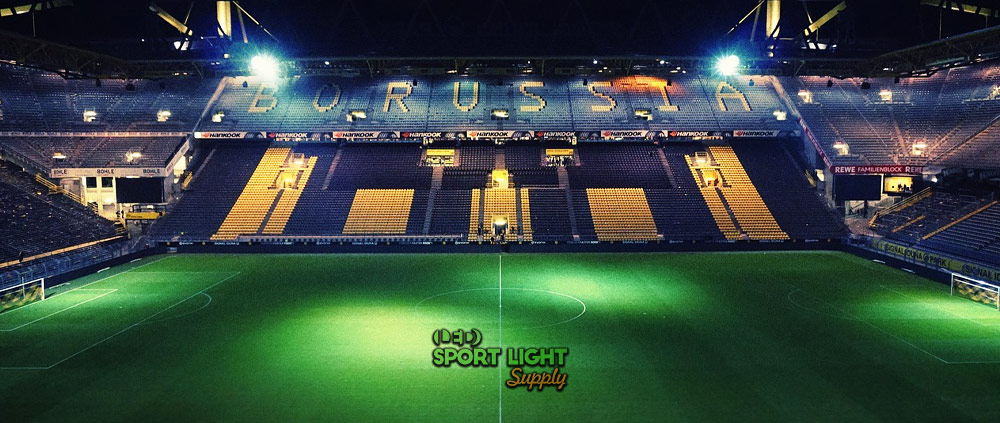
Spot lights are designed for long-range illumination with narrow beam angles, usually no wider than 45 degrees. They focus on specific areas of the field from greater distances, ensuring that distant sections are well-lit. Despite the potential for light loss over long distances, spot lights use precise calculations to adjust Lumen output, maintaining appropriate Lumen and Lux levels.
To address any gaps left by spot lights, flood lights are often used in combination, filling in areas where the spot lights’ coverage intersects.
High Mast Lights
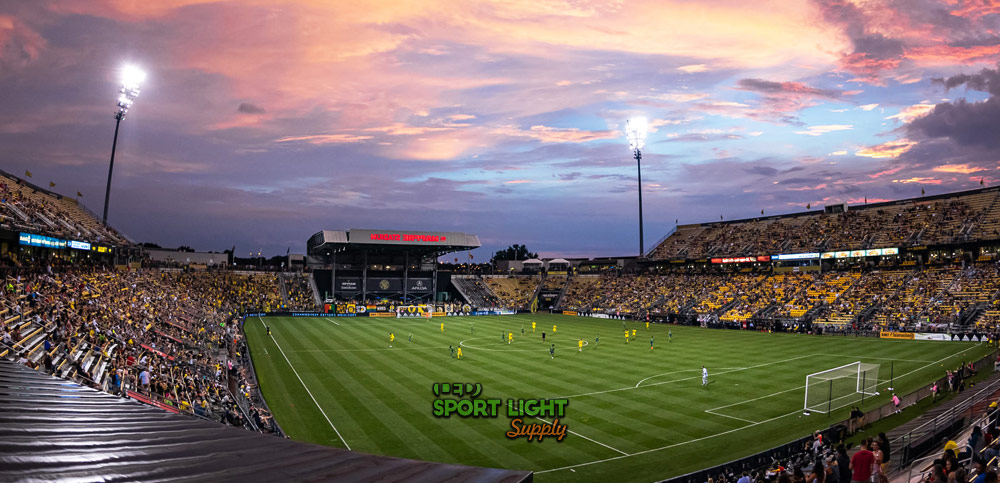
High mast lights vary significantly in height, typically ranging from 20 to 50 meters depending on the stadium’s design and the level of competition. These lights are crucial for providing high-intensity illumination necessary for professional games and extensive television coverage.
The intensity and color temperature of high mast lights are adjusted to create a bright and lively atmosphere that enhances both the spectator experience and the athletes’ performance. The increased height and brightness contribute to a more visually engaging environment, ensuring that every detail on the field is clearly visible.
What Type of Lights Do Indoor Football Stadiums Use?
High Bay Lights
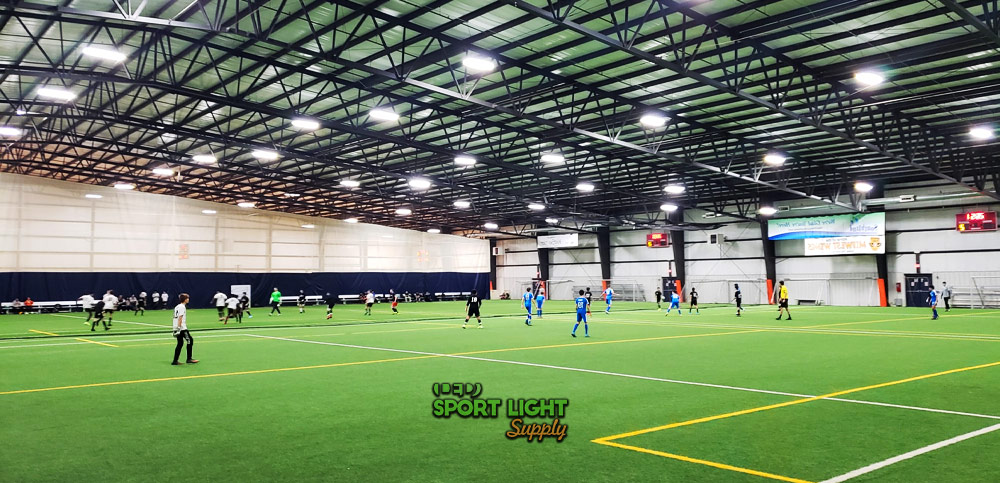
High bay lights are essential for indoor football fields, where they are suspended from the ceiling rather than mounted on poles. These lights are often arranged in a grid pattern to ensure even coverage across the field. While not as common for football-specific stadiums, high bay lights are frequently used in arenas for other sports, including rugby and soccer.
Due to the typically high ceilings in indoor football stadiums, high bay lights are designed with specific beam angles. The distance from the ceiling to the playing surface determines the light distribution, ensuring that the light spectrum is narrow enough to provide adequate illumination without creating excessive glare or uneven lighting.
Panel Lights
Panel lights are another effective lighting solution for indoor football fields. Mounted along the edges of the ceiling, these lights offer enhanced illumination and minimize shadows that high bay lights might create. Panel lights are typically larger and are most effective when installed at the highest points of the ceiling.
While panel lights are commonly mounted on high mast poles, they can also be attached to wall brackets. Wall-mounted panels allow for targeted lighting, focusing on specific areas of the field to better illuminate the players. This targeted approach ensures that athletes receive optimal light, improving their performance and visibility during the game.
Types of Football Stadium Lights
LED Stadium Lights

LED stadium lights are becoming increasingly popular due to their energy efficiency and long lifespan. The primary advantage of LED lighting is its significant energy savings compared to other lighting technologies. Additionally, LEDs have a much longer operational life, often lasting up to 25 years without issues, unlike traditional lights that may only last 2-3 years before requiring replacement.
LED lights are favored for their durability and low maintenance needs, as there is typically no need to replace the diodes unless there is a manufacturing defect. This makes them a cost-effective and reliable choice for modern stadiums.
Metal Halide Lights
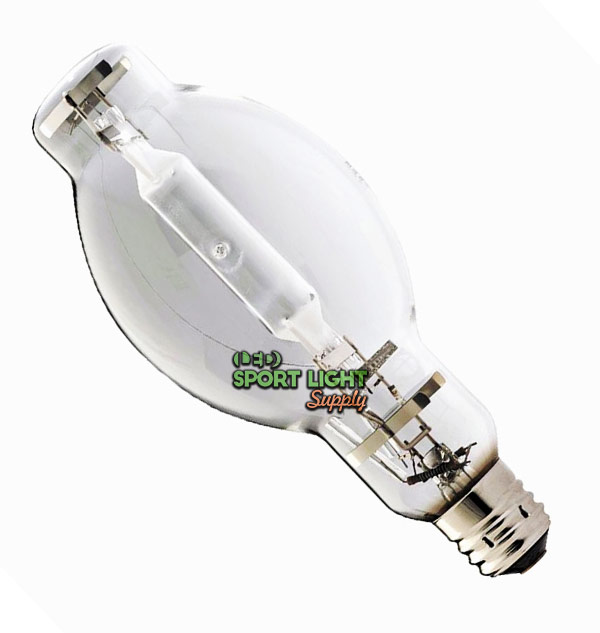
Metal halide lights have been a standard choice for sports lighting for over 50 years. However, they come with several drawbacks. One major issue is the lengthy warm-up time of 5-15 minutes, which can delay the start of events. Additionally, metal halide lights require ballasts to maintain a consistent flow of electricity, and they must be completely cool before they can be restarted. Frequent switching on and off can lead to maintenance problems and increased operational costs.
The need for a dedicated electrical crew during major events adds to the overall expenses associated with metal halide lighting, making it less favorable compared to newer technologies.
Halogen Lights
Halogen lights are known for their high heat output and relatively short lifespan. Typically, halogen bulbs last about 2 years but begin to dim after roughly half of their life span. A significant concern with halogen lights is their tendency to overheat, which can be dangerous, especially if exposed to rain. Cold water can shatter the glass lens, posing risks of burns and potential injuries from exploding bulbs.
Due to these safety concerns and the need for frequent replacements, halogen lights are not an ideal choice for stadium lighting.
High-Pressure Sodium (HPS) Lights
High-pressure sodium lights are being phased out due to their high UV light emissions, which can be harmful to the skin. Prolonged exposure to HPS lights can cause sunburns and other skin issues. These lights also require a ballast to operate correctly and can emit harmful UV radiation if the lamps crack. As the bulbs age, their color degrades and shifts to an orange hue, further diminishing their effectiveness.
Due to these health risks and operational concerns, HPS lights are increasingly being replaced by more advanced lighting technologies.
Mercury Vapor Lights
Mercury vapor lights use two separate tubes to produce light: an inner tube that generates significant heat and an outer tube that mitigates some of that heat. These lights are problematic for sports lighting due to their toxicity, as they contain mercury. Disposal of mercury vapor bulbs is regulated to prevent environmental contamination.
The UV radiation emitted by mercury vapor lights can cause sunburns and ultraviolet poisoning, making them less desirable for stadium lighting. As with other outdated technologies, mercury vapor lights are being replaced by LED options, which offer improved safety and performance.
Each type of stadium light has unique characteristics, but the trend is moving towards more energy-efficient and safer options like LEDs, which address many of the issues associated with older technologies.
LED Stadium Lights – The Trend
In recent years, there has been a significant shift towards adopting LED lighting in football stadiums. This transition is part of broader phase-out programs aimed at replacing older, less efficient lighting technologies. LED lighting has emerged as a leading innovation, offering numerous advantages such as energy savings, extended lifespan, and reduced wattage consumption.
Energy Efficiency and Longevity
LED lights are renowned for their superior energy efficiency and longevity compared to traditional stadium lights. They consume less power while providing the same or even greater illumination, which translates to lower monthly energy costs. Additionally, LEDs have a much longer lifespan, reducing the need for frequent replacements and thereby minimizing maintenance efforts.
Enhanced Performance
One of the key benefits of LED lights is their exceptional performance in broadcasting and high-definition imaging. The rapid firing semiconductors in LEDs ensure minimal flicker, making them ideal for television broadcasts and 8K TV resolutions. This feature is crucial for capturing high-quality visuals during live sports events.
Instant On and No Warm-Up Time
Unlike traditional lighting technologies, LEDs do not require a warm-up period. They can be turned on instantly, eliminating any delay and ensuring that lighting issues are virtually non-existent. This feature is particularly advantageous during events where precise lighting control is essential.
Adjustable Lighting and Kelvin Temperature Control
LED lights offer flexible lighting control, including the ability to adjust the Kelvin temperature to match the specific needs of different levels of football play. This customization allows for optimal lighting conditions, whether for high-intensity matches or lower-light practice sessions. Additionally, LEDs can be dimmed as needed, providing further control over the lighting environment.
Conclusion
The transition to LED lighting in football stadiums is driven by its numerous benefits, including reduced operational costs, minimal maintenance, and superior performance. With the ability to provide high-quality illumination instantly and adjust lighting settings as needed, LED lights are a valuable investment for any football stadium looking to enhance its lighting infrastructure.
